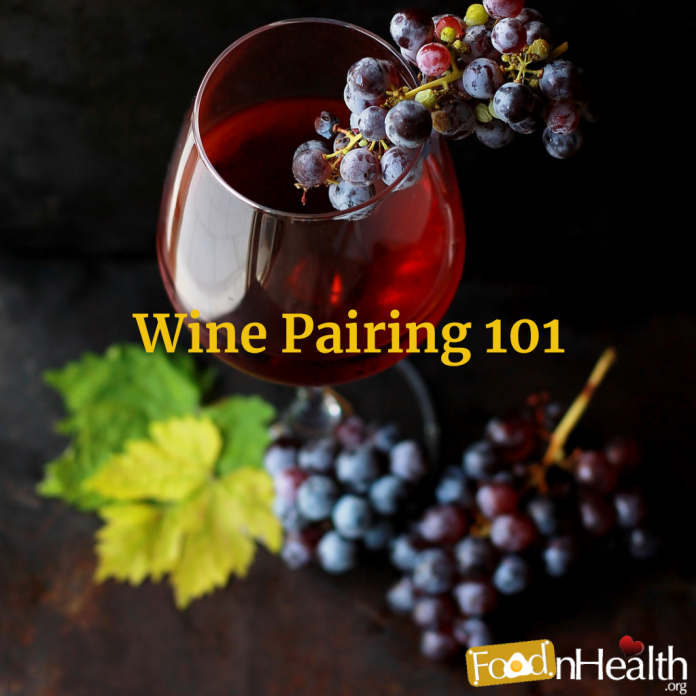It is crucial to balance the fundamental components in both wine and food to achieve the best match. That said, do you have any idea how to select the right alcohol or wine that will complement your meal? The one attribute you need to remember (always) is never to have a wine that will overwhelm or subjugate the food and the other way around.
Therefore, the primary thing you’re searching for is a classic pairing. There are a few elements of wine like alcohol, tannins, fruit, acid, and sugar. Also, there are flavor elements of food such as texture, bitter, sweet, salty, acidic, and fat. If you want to harmonize them, consider how these elements will work together.
What’s your superior flavor? Is it salty, citrusy, or sweet? These are the factors you need to take into consideration for wine and food pairing. For a little help, here’s a quick rundown of rules of wine and food pairing.
Salty Requires Bubbles
Pairing fried or salty food with the right alcohol can be a bit challenging. The bubbles of the sparkling wine add an entirely different consistency and introduce a new flavor to it. There’s a chemical reaction between salt and alcohol that’ll give unique elements to the food.
When matching it with a tangy meal, it’s ideal to use acidic, crisp, or fruity one. One of the most excellent salty-friendly alcohol includes crisp rose and Pinot Grigio. So, when a basket of fried calamari, a plate of fried chicken, or a bowl of potato chips comes your way, there’s no need to grab for a beer.
Aid Needs Acid
When pairing a wine with a particular dish, you need to consider or take into consideration the acid balance between them. For example, if the dish has a relatively high level of acid, then you should pair it with, for the most part, the citrusy yet light acidic white wine.
Let us take a realistic example, pasta with tomato sauce, roasted fish with citrus, or a chicken piccata will go well with a bright citrusy Sauvignon Blanc or Pino griot. With this combination, you will surely taste a refreshing lemon in your meal.
But if you like red wine, for instance, Sokolin Red wine, then go for high acid, low tannin one. In this way, you’ll augment the acidic level in your food.
Tannins Need Fat
Tannin is a substance called polyphenol that is found in leaves, fruit skins, bark, wood, plants, and seeds. As an ingredient of the wine, it adds both bitterness and astringency, and complexity as well. Tannin is usually found in the red wine. However, it can also be found in the white wine as well, so long as it aged well in wooden barrels.
It will provide you with that bitter, puckery feeling in your throat. To equalize it, pair it with fatty food that’ll soften and smoothen the tannin, and give you a crisp taste. So, if you like to eat food with high-fat contents such as grilled sausages, braised duck, or prime, you will need a drink that will stabilize it out.
You can pair such food with a dark red win such as Cabernet, Tannat, or Malbec. In this way, you will balance out or stabilize the fatty elements.
Spicy Needs Sweet
If you like eating spicy dishes or food, then you are going to need a slightly sweet, lighter beverage to match it with. A perfect example is white Zinfandel or Riesling. Hot and spicy food always pairs best with low alcohol, sweeter wine.
So, even if you don’t prefer such drinks, you will still be surprised at how perfect the combination is. Make sure to keep it cool before you serve.
Oak With Smoke
Pair grilled or charred food with wines that have been, for the most part, aged on oak. Why? It is because they can bring more flavors in a meal since they are, more often than not, more intense. Charred or grilled food will surely bring that fruity flavor you have been looking for.
A great example is a California Chardonnay. With this kind of wine, you need to pair it with a dish that equals their intensity.
Takeaway
All in all, it all depends on your personal preferences and taste. If you are not sure what wine matches what food, you can refer to the rules above. And perhaps, it suits your taste. The anatomy of pairing wine and food is indeed exciting. Matching these two do not need to be rocket science. The only thing that you need to remember is that wine and food pairing is subjective. Although there are rules for pairing wine and food, it is more important to match what you like. Because then, nothing can go wrong.


























